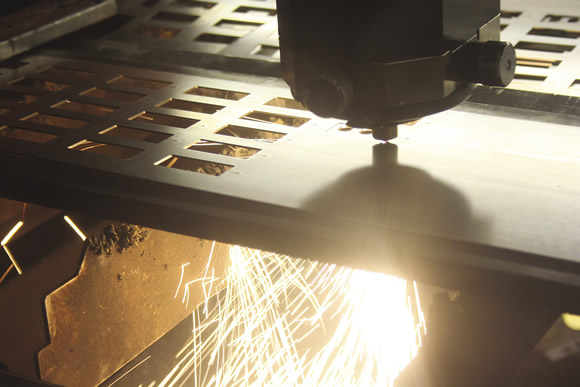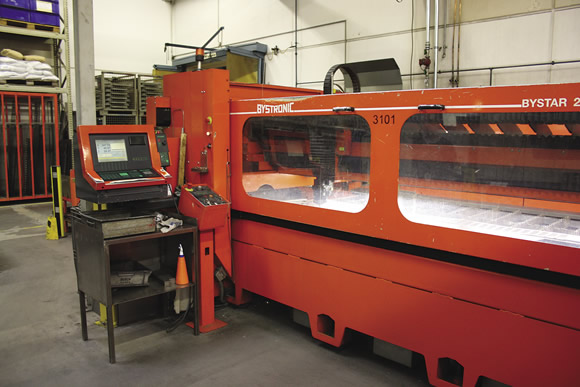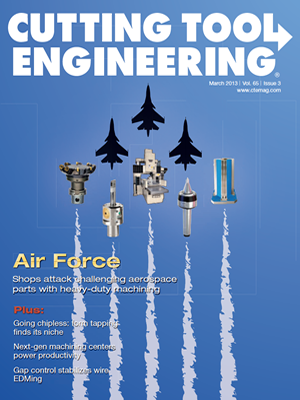END USER: Walter Goetz GmbH, 011-49-7433-9027-0, www.waltergoetz.de.
CHALLENGE: Overcoming a bottleneck caused when programming different machine tools with various CAD/CAM systems.
SOLUTION: A single CAD/CAM system that can program multiple machine brands.
SOLUTION PROVIDER: JETCAM International s.a.r.l., 011-44-870-760-6469, www.jetcam.com.
Walter Goetz GmbH, Balingen, Germany, with more than 100 employees, provides subcontract services to produce semifinished or fully finished metal products for prototypes or small and medium-sized production runs. To achieve this, the company continually purchases and upgrades CNC cutting machines, including laser, waterjet, punching and combination punch and laser equipment from multiple builders.
Stefan Burghard, managing director at Walter Goetz, eventually realized that programming the machines was becoming a production bottleneck. “We had three different CAD/CAM systems to program the machines,” he said.
It was a significant effort when, for example, a new job had to be reprogrammed for another machine if a machine was unavailable due to heavy workload or maintenance requirements. In addition, it took a long time for the staff to learn how to use several systems. If a programmer was away, a production area would stagnate because other programmers would need training time on the respective software.
The company decided to commit to a single CAD/CAM system because it was simply not possible to use the software supplied with each machine brand to program machines from other builders. Burghard researched the CAD/CAM market for a solution and came across JETCAM CAD/CAM software from JETCAM International s.a.r.l., Monaco.

JETCAM CAD/CAM software allows Walter Goetz to buy any brand of machine tool and simply purchase a new post-processor to program the machine.

Walter Goetz bought a post-processor from JETCAM’s German distributor Blechwelt for its Bystronic Bystar laser cutting machine to replace the machine’s proprietary software.
“The system impressed us from the beginning,” Burghard said. “It is simply and logically built, so new co-workers find their way easily in a very short period of time. Suddenly, I could buy any brand of machine without having to worry about the programming process. We would simply order a new post-processor, and nests that would be running on a laser could run on a waterjet with just a mouse click.”
As newly purchased machines became more complex, the software was adapted to take advantage of new machine advancements. Some examples of features that were added to improve efficiency include:
■ Remnant sheet management that allows the user to build a database of partially used material. The software enables selecting any remnants based on size and nesting parts in any remaining material, not just rectangular shapes.
■ Improved CAD cleaning filters, meaning “dirty” DXF files can be imported and automatically fixed. A dirty DXF is one that, for example, has lines that are not connected or an arc made up of many small lines.
■ Automatic nest centering to add sheet stability when the user has a highly efficient nest.
Another key benefit is the software stores the tooling and profiling information for the part and not the nest. “When a new machine is purchased, all the user has to do is automatically apply tooling for all existing parts for the new machine,” said Martin Bailey, general manager of JETCAM. “This can be done quickly and even without user intervention. Therefore, the user is able to run existing parts on the new machine immediately with little effort.
“We also apply technology based on the machine,” he continued. “Where parts might be microjointed on one machine, they could be unloaded via a part chute on another, as this information is intelligently applied during tooling.”
Microjoints, or microtags, are small pieces of material that hold a part in place. A part chute is a trap door in the middle of the table. JETCAM can automatically decide whether a part should be unloaded through the part chute vs. keeping it in place with microjoints.
Bailey added that JETCAM customers range from shops with basic punching machines to multinational manufacturers with fully automated cells running 24/7 using sheet loading/unloading systems. As customers have updated their machinery, JETCAM software is still able to drive it, regardless of the brand or capability, according to the company. CTE
Related Glossary Terms
- centering
centering
1. Process of locating the center of a workpiece to be mounted on centers. 2. Process of mounting the workpiece concentric to the machine spindle. See centers.
- computer numerical control ( CNC)
computer numerical control ( CNC)
Microprocessor-based controller dedicated to a machine tool that permits the creation or modification of parts. Programmed numerical control activates the machine’s servos and spindle drives and controls the various machining operations. See DNC, direct numerical control; NC, numerical control.
- computer-aided design ( CAD)
computer-aided design ( CAD)
Product-design functions performed with the help of computers and special software.
- payload ( workload)
payload ( workload)
Maximum load that the robot can handle safely.
- profiling
profiling
Machining vertical edges of workpieces having irregular contours; normally performed with an endmill in a vertical spindle on a milling machine or with a profiler, following a pattern. See mill, milling machine.


